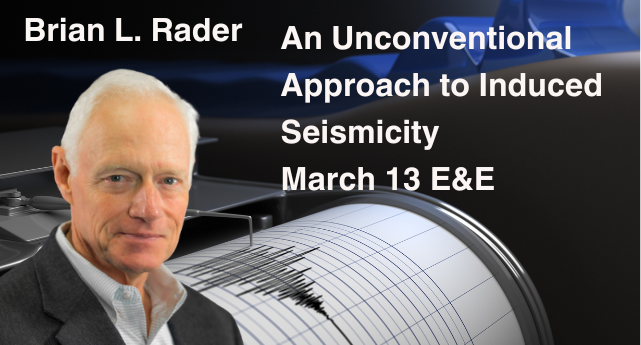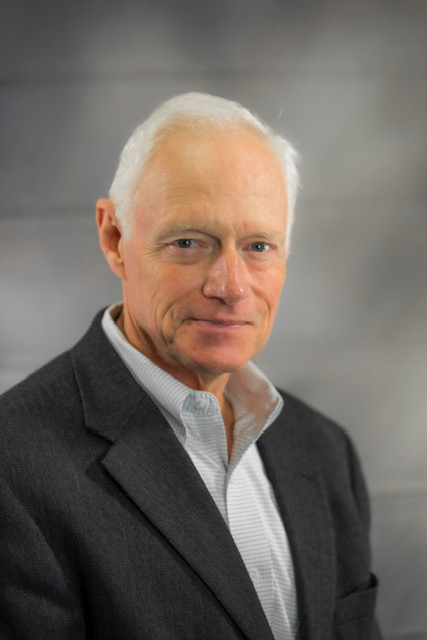Wednesday, March 13
Location: Los Tios Restaurant, 9527 Westheimer Rd
Houston, 77063
Social 5:30 p.m., Dinner 6:30 p.m., Presentation 7:30- 9:00 p.m.
Cost: $35 Pre-registered members; $40 non-members & ALL walk-ups
To guarantee a seat, you must pre-register on the HGS website and pay with a credit card. You may walk up and pay at the door if extra seats are available. Please cancel by phone or email within 24 hours before the event for a refund. Online & pre-registration closes Wednesday, at 5:00 a.m.
An Unconventional Approach to Induced Seismicity
Speaker: Brian L. Rader

This study began by looking into the induced seismicity in the Fort Worth Basin (FWB). The frequency of Magnitude 3 (M3) and larger earthquakes increased in 2014 and 2015. Oil and gas activity has been associated with these earthquakes. In June 2015 the earthquakes stopped. There were nine events of M3 and larger in the first five months of 2015 but it decreased to one per year after June 2015. Industry activity did not have any significant change that could explain this dramatic change in seismicity. As gas production and wastewater injection decreased, the number and magnitude of earthquakes increased. This study took an unconventional approach to seeking an explanation for this observation. When looking at rainfall and drought in the Fort Worth Basin a match was seen between these factors and the seismicity pattern. Rainfall appears to reduce the magnitudes and frequency of the FWB-induced earthquakes. Where the drought increased the earthquake number and magnitudes. Further investigation details where the induced earthquakes occur and why they are absent on other faults within the basin.
The FWB faults that are seismically active, magnitude 3 (M3), and larger, are located near or at the structural low of the injected formation. Recent research suggested that the injected fluid migrates based on the formation pressure. The injected formation has the highest formation pressure where it has the largest overburden, at the formation deepest burial or structural low. Therefore, the injected fluid will migrate updip from high pressure to lower pressure. The proposed fluid factor suggests migrating fluid will lubricate faults in the migration pathway. The fluid reduces the frictional strength of the fault and allow the fault to fail at lower stress levels resulting in small magnitude earthquakes and could explain the absence of seismicity on other faults within the basin. Recently induced seismicity has increased in the Delaware Basin within the Permian Basin of West Texas. Seismicity (M3 and larger) in the Delaware Basin is concentrated in two areas although oil industry activity is spread between 6 counties. Recent Delaware Basin researchers have had difficulty explaining why earthquakes are absent in some counties even though there is not an apparent difference in industry activity. Delaware Basin oil and gas production lately has been steady, however, earthquake magnitudes and frequency have increased. Applying the FWB method, of adding a fluid factor, appears to provide an understanding of earthquake location, frequency, and magnitude of induced seismicity in the unconventional play of the Delaware Basin.
Speaker Biography

Brian L Rader has worked in the oil and gas industry for over 38 years. He received a B.S. in Marine Science from Texas A&M at Galveston and a M.S. in Geophysics from Texas A&M College Station. Early in his career he worked for several companies helping them move from Gulf of Mexico shelf exploration into the deepwater areas. The last 14 years he has worked on international exploration in the Atlantic Transform Margin. More recently he consulted for AMNI International on their West Africa properties from 2018 to 2020. Brian lived in Dallas while working for Kosmos Energy and felt several of the earthquakes that occurred in the Dallas/Irving area. He noticed when the earthquakes nearly stopped in 2015, although oil and gas activity continued. Upon investigating events around the time of reduced induced seismicity, he found a factor that had a strong correlation when plotted against the earthquake pattern in the Fort Worth Basin. He has presented his results at three conferences and had three articles published covering his results in the Fort Worth Basin and more recently in the Delaware Basin of West Texas.
If this event is specific to a Committee, select the committee here, so the event will ONLY be listed on that committees calendar.




